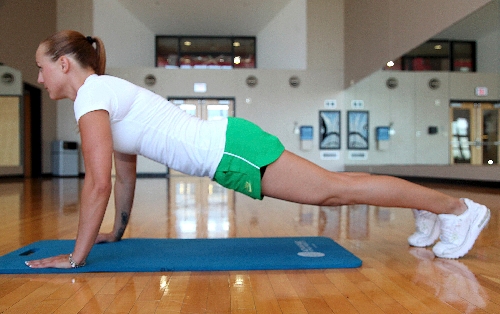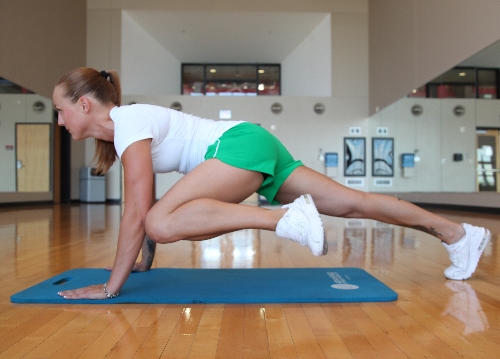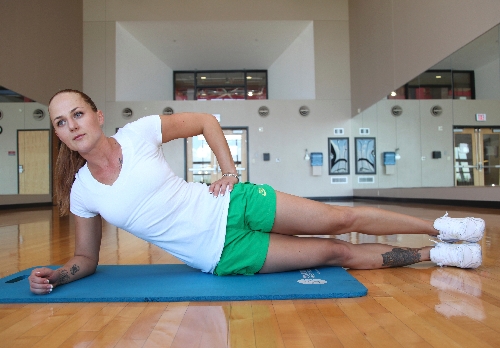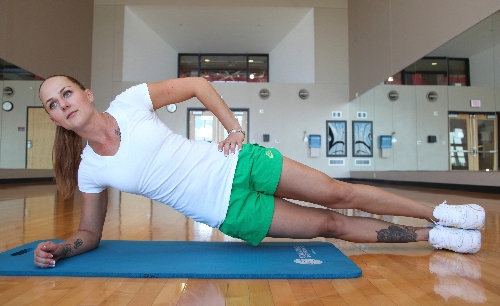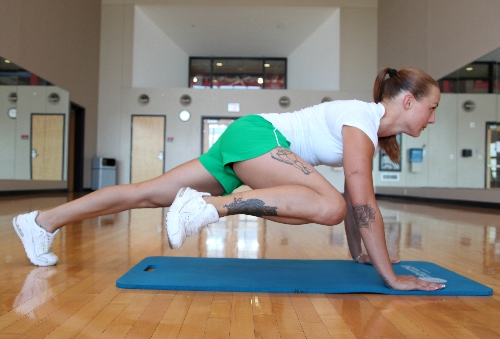People with stronger cores may have planks to thank
When I asked Jenn Coca, today's fitness subject, about her favorite core exercise, she answered by demonstrating the hell plank.
Jenn has one of the strongest cores I've seen and if she says an exercise is effective, it is.
Today, Jenn demonstrates one of her favorite core exercises. I like 'em, and my clients hate them. Thanks Jenn.
Today's exercises follow the principles of core training. All core training requires three things: activation, stabilization and progression. Brace your tummy as if you were going to take a punch to the gut. That is an activated core.
Now, have that tight core stabilize your body during an easy exercise. When you've become good at an easy exercise, progress to something harder.
Do the same exercise on one foot. You can also add weight for a controlled movement.
Today's exercises are a progression of the basic plank. See my September 2011 column on planks to brush up on form.
The plank works because it requires the core to stabilize. There is no movement, only holding. The core loves to hold. It supports your body all day long.
Big muscles, like leg muscles, are for large movements such as squats, running and jumping. Your core is made of many smaller muscles. Smaller muscles are for stabilizing.
This means that doing 1,000 situps on the crunch machine at the gym will not be as effective in building core strength as a few smart stabilization exercises.
For those just looking for a trim waistline, stabilization exercises will strengthen without building bulky abs and obliques. Core strength is one thing, but if you want abs to show, use cardio. Cardio will help decrease the layer of body fat hiding those awesome abs.
Stabilization training also helps those who like to lift heavy weight. Core stabilization is foundational for any major lift. Ever tried a squat with a loose core? Probably only once. Keeping a tight core is essential when descending into and coming out of a squat. The core needs to stay tight the whole time.
Holding a tight core will protect the spine as well as keep it in place to maximize the body's natural structural ability. The body is capable of great feats.
Dead-lifting, or any lifting from the ground up, requires proper core activation. That activation needs to be maintained throughout the movement to align the spine and maintain that alignment.
Any bench presser will tell you that core stability, as well as glute activation, plays a huge roll in force generation to push the barbell over your head. All these major lifts require core stabilization to maintain structural alignment. Short, fast crunches by the hundreds can't teach that.
Today's exercises will improve core stabilization. Hell planks require proficiency of the basic plank. They require core activation to hold the plank and maintain stabilization while the leg moves. You can start off performing five knee-to-elbow movements on each side and progress to 15 or 20. Jenn does this exercise while supersetting with jump rope drills. This way, her heart rate is recovering while her core is working.
Side planks are a progressed form of the traditional plank. This exercise requires more work from the obliques. It, too, can be further progressed by adding movement or a weight.
Hold this position 60 seconds for three sets. Common mistakes are to let the hips sag or have a bend in the hips. The body should appear straight from all angles.
Chris Huth is a Las Vegas trainer. You can contact him at 702trainer@gmail.com. Before beginning any exercise program, consult your physician.



